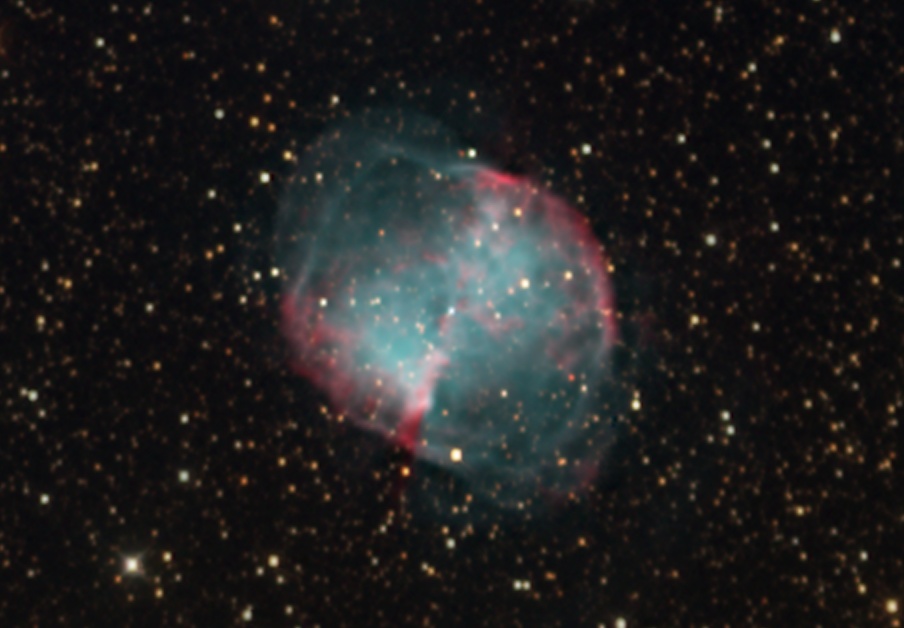
Planetary nebulae play a critical role in the evolution of our universe. The Big Bang resulted only in the creation of the elements hydrogen and helium, along with a small amount of lithium. All of the other elements were produced by stars, mainly by nuclear fusion in the cores of stars. However, if the heavier elements produced by stars simply remained captive to the gravity of the stars that made them, we would not be here. The heavier elements had to somehow escape the stars that made them and return to the cosmos to form gas clouds, planets, and eventually living beings. The miracle of how such heavier elements like carbon and oxygen, which are essential to life, return to space so they can be re-cycled, is displayed right before your eyes in this image. Gas comprising heavy elements is expelled by low mass dying stars to create planetary nebulae, while a high mass star will expell gas when it explodes as a supernova. Our universe is a giant re-cycling machine.
M27 was the first planetary nebula discovered by Charles Messier, and he found it on July 12, 1764. M27 was the first planetary nebula ever seen by any human. William Herschel eventually invented the name "planetary nebula" for objects like this when he completed his classification of nebulae in 1785, because he found them to resemble the planet Uranus that he had recently discovered. The popular name "Dumbell Nebula" comes from the description of this object that was recorded by John Herschel.
The Dumbell Nebula is one of the brightest planetary nebula in the sky. M27 is rated at magnitude 7.4. Although the Helix Nebula is listed at magnitude 7.3, the Helix Nebula is spread out over a larger area and thus has a lower surface brightness. For example, the Helix Nebula has its light spread over an area 17.6 arc-minutes in diameter, whereas the light of the Dumbbell Nebula is spread over an area of only about 6.7 arc-minutes in diameter. Because of its relatively high surface brightness, the Dumbbell Nebula is one of the best planetary nebulae to view with an amateur-size telescope. M27 can be detected with binoculars under reasonably dark skies.
The central star in this nebula a very hot bluish dwarf with a surface temperature of about 85,000 degrees Kelvin. The gas ejected from this dying star is expanding at a rate of about 17 miles per second. The Dumbell Nebula is located about 1,250 light-years away in the constellation Vulpecula.
The data for this RGB CCD image was acquired on seven different nights from my backyard with a Takahashi Epsilon 250 telescope and an ST-8XE CCD.
M27 (NGC 6853)
Constellation: Vulpecula
RA: 19h 59m 36s Dec: +22d 43' 18" (J2000)
July 2, 3, 4, 5, 7, 8 & 9, 2005
Image by Sid Leach
Scottsdale, Arizona
Recent Images.
Complete list of images.
Description of equipment used to acquire images.
Home
Feedback and comments should go to Sid